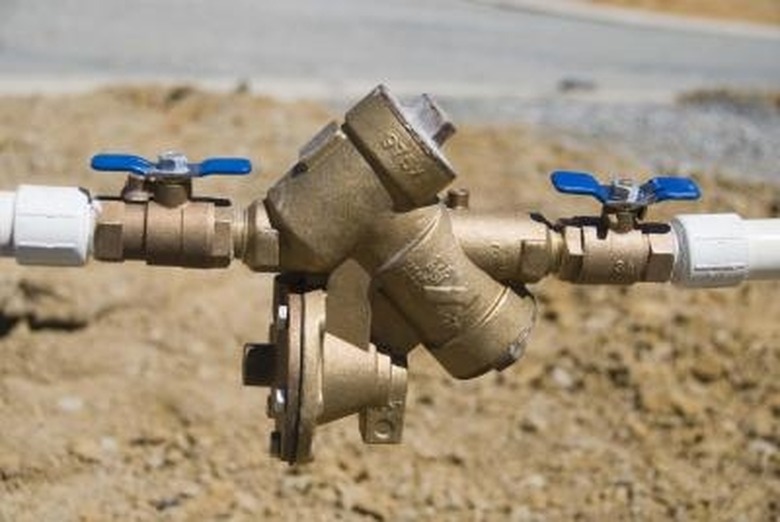How To Measure The Volume Of Gas Using Water Displacement
Many chemistry and physics experiments involve collecting the gas produced by a chemical reaction and measuring its volume. Water displacement represents one of the easier methods to accomplish this task. The technique typically involves filling a glass column open on one end with water and then inverting the column and submerging the open end in a bowl of water. Columns built specifically for this purpose are called eudiometer tubes. The determined volume of a gas becomes useful only if the pressure of the gas is also known. This requires equilibration of the pressure inside the tube with atmospheric pressure.
Step 1
Fill a 50- or 100-milliliter eudiometer tube completely with distilled water. Also fill a large bowl or beaker about half full with distilled water, and fill a large column, such as a 500-milliliter or 1 liter graduated cylinder, about 90 percent full with distilled water.
Step 2
Plug the end of the tube with your finger. Invert the tube and submerge the open end in the bowl of water, then remove your finger from the opening.
Step 3
Secure the eudiometer tube in a buret clamp attached to a ring stand. Make certain the bottom of the tube sits at least 1 inch from the bottom of the bowl.
Step 4
Insert a length of flexible tubing into the open end of the eudiometer tube. Blow into the other end of the tubing. Continuing blowing until you have displaced about half of the water from the tube, i.e., the water level in a 50-ml tube has dropped to 25 ml.
Step 5
Remove the flexible tubing from the eudiometer's opening. Place your finger over the submerged end of the tube, remove it from the buret clamp, then submerge the open end of the tube in the large column or graduated cylinder of water. Do not remove your finger until you are certain the bottom of the tube is fully submerged.
Step 6
Lower the eudiometer into the water-filled graduated cylinder prepared in step 1 until the water level inside the eudiometer tube is exactly even with the water level in the graduated cylinder. At this point, the pressure inside the eudiometer tube is equal to the pressure outside the tube, i.e., atmospheric pressure. Now read the volume of the water level in the eudiometer tube. Because glassware manufacturers label the volume readings on eudiometer tubes from closed end to open end, this volume reading will reflect the volume of gas in the tube.
Things Needed
- 50- or 100-ml eudiometer tube
- Distilled water
- 500-ml or 1-liter graduated cylinder
- Large bowl or pan
- Ring stand
- Buret clamp
- 2-foot-long flexible rubber or plastic tubing
Cite This Article
MLA
Brubaker, Jack. "How To Measure The Volume Of Gas Using Water Displacement" sciencing.com, https://www.sciencing.com/measure-gas-using-water-displacement-7912117/. 24 April 2017.
APA
Brubaker, Jack. (2017, April 24). How To Measure The Volume Of Gas Using Water Displacement. sciencing.com. Retrieved from https://www.sciencing.com/measure-gas-using-water-displacement-7912117/
Chicago
Brubaker, Jack. How To Measure The Volume Of Gas Using Water Displacement last modified August 30, 2022. https://www.sciencing.com/measure-gas-using-water-displacement-7912117/
